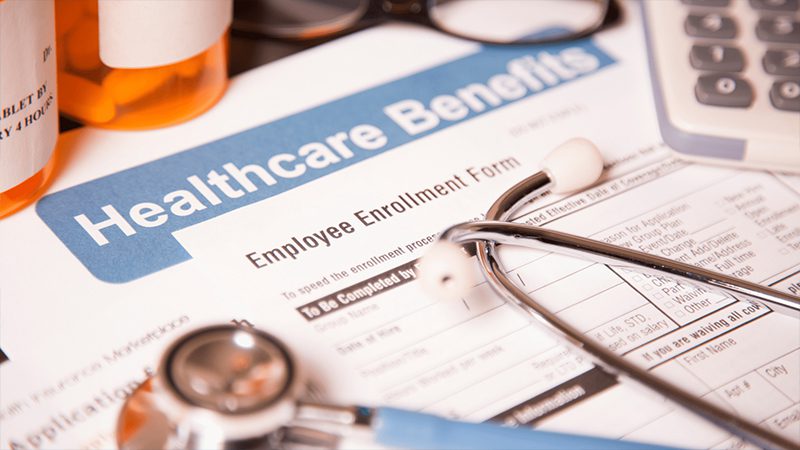
THE DUFF TORNEY TEAM
Open Enrollment is Coming – Here’s Why a Health Savings Account Could Make Sense
Wesley Sebacher, CFP®

Many individuals and families are enrolled in a High-Deductible Health Plan (HDHP). These plans offer a unique feature called a Health Savings Account (HSA), which allows a person to set aside money for healthcare expenses.
But a health savings account can be much more than that. It enables participants to reduce their taxable income, pay qualified medical expenses tax-free, and build savings outside of their retirement and investment accounts.
With open enrollment for 2024 upon us, now is the time to understand how a high-deductible health plan and health savings account work. Most importantly, understanding how these unique features can provide significant financial benefits.
Who Should Consider a High–Deductible Health Plan?
A participant must choose a high-deductible health plan (HDHP) to be eligible for a health savings account. Because the premiums are lower and the deductible is higher than a low-deductible health plan, healthier workers often choose these plans. They commonly have less concern over their health, may only see a doctor for an annual exam, or don’t mind the risk of out-of-pocket expenses.
For those with minimal healthcare needs, a high-deductible health plan may be suitable.
The Financial Benefits of a Health Savings Account
If you are considering a high-deductible health plan, here are the benefits of contributing to a health savings account.
First, anyone who contributes to an HSA receives an income tax deduction. For 2024, individuals can contribute $4,150 and families up to $8,300, plus an additional $1,000 catch-up provision for those age 55 and older. The money contributed to a health savings account is pre-tax, allowing you to reduce your taxable income each year.
As an employee benefit, some employers may contribute to an employee’s health savings account. Since the Internal Revenue Service (IRS) limits the health savings account annual contribution, it’s important that the total amount is within these limits – If an employer is contributing, less contribution will be required by the employee.
Next, when funds from the account are used to pay for qualified medical expenses, withdrawals are tax-free. Any HSA funds not used within the year can be retained in the account and continue to grow tax-free toward future qualified medical expenses.
Here’s an example of how an HSA can work:
A family enrolled in a high-deductible health plan contributes $8,300 to their health savings account in 2024. The family uses $3,300 to pay for their medical expenses, covering costs such as doctor visits and prescription drugs. At the end of the year, there is $5,000 remaining in the account.
The $5,000 will be retained in the account and the funds can be invested and continue to grow. If a person is able to contribute each year, the benefits can be significant over the long-term. These savings can be used to cover medical expenses in retirement or provide an extra source of retirement income.
Here are some other key benefits of an HSA:
- Health savings accounts often have a variety of investment options, allowing the ability to build a diversified portfolio.
- After age 65, funds can be used for non-medical expenses without penalty. However, the distribution would be taxed as ordinary income, similar to a traditional IRA. Non-medical expenses prior to age 65 will be subject to taxation and penalty.
- A health savings account is portable. If you choose to switch jobs, you will retain your account and can continue to contribute if you remain on a high-deductible health plan.
- Qualified medical expense reimbursement can be completed at any time during the life of the health savings account.
- A health savings account can be paired with a dependent care flexible spending account or a limited purpose flexible spending account for additional tax-deferral and healthcare expense benefits.
Here’s How to Contribute to a Health Savings Account
The most convenient way to contribute to a health savings account is through automated payroll deductions. You may also make a lump sum contribution for 2024 up until the tax filing deadline of April 15, 2025. A less common method is completing a one-time rollover from an individual retirement account (IRA) to a health savings account up to the annual contribution limit.
Once enrolled into a high-deductible health plan and participating in the health savings account, you can begin taking advantage of the various financial planning strategies surrounding health savings accounts and their income tax benefits.
A high-deductible health plan is not for everyone and the choice to participate should be discussed with a qualified financial professional or benefits specialist to determine the most appropriate solution for your situation.
Have questions? Let’s Talk
© 2024 Advisory services offered by Moneta Group Investment Advisors, LLC, (“MGIA”) an investment adviser registered with the Securities and Exchange Commission (“SEC”). MGIA is a wholly owned subsidiary of Moneta Group, LLC. Registration as an investment advisor does not imply a certain level of skill or training. The information contained herein is for informational purposes only, is not intended to be comprehensive or exclusive, and is based on materials deemed reliable, but the accuracy of which has not been verified. Given the dynamic nature of the subject matter and the environment in which this communication was written, the information contained herein is subject to change. This is not an offer to sell or buy securities, nor does it represent any specific recommendation. You should consult with an appropriately credentialed professional before making any financial, investment, tax or legal decision. All investments are subject to a risk of loss. These materials do not take into consideration your personal circumstances, financial or otherwise.